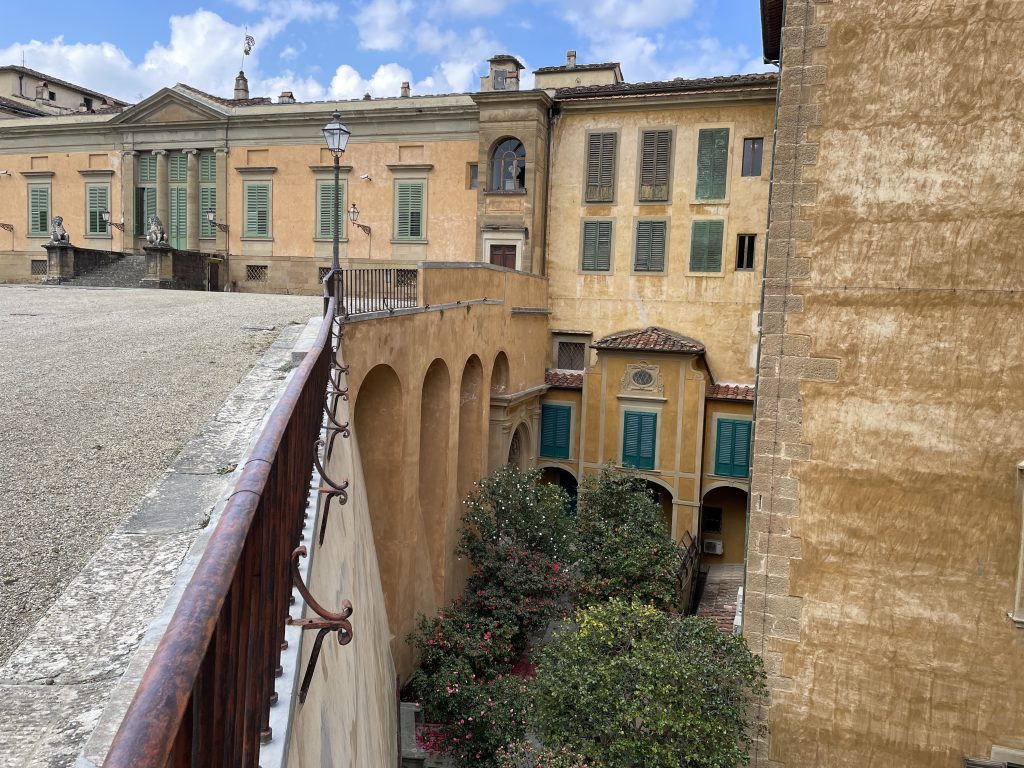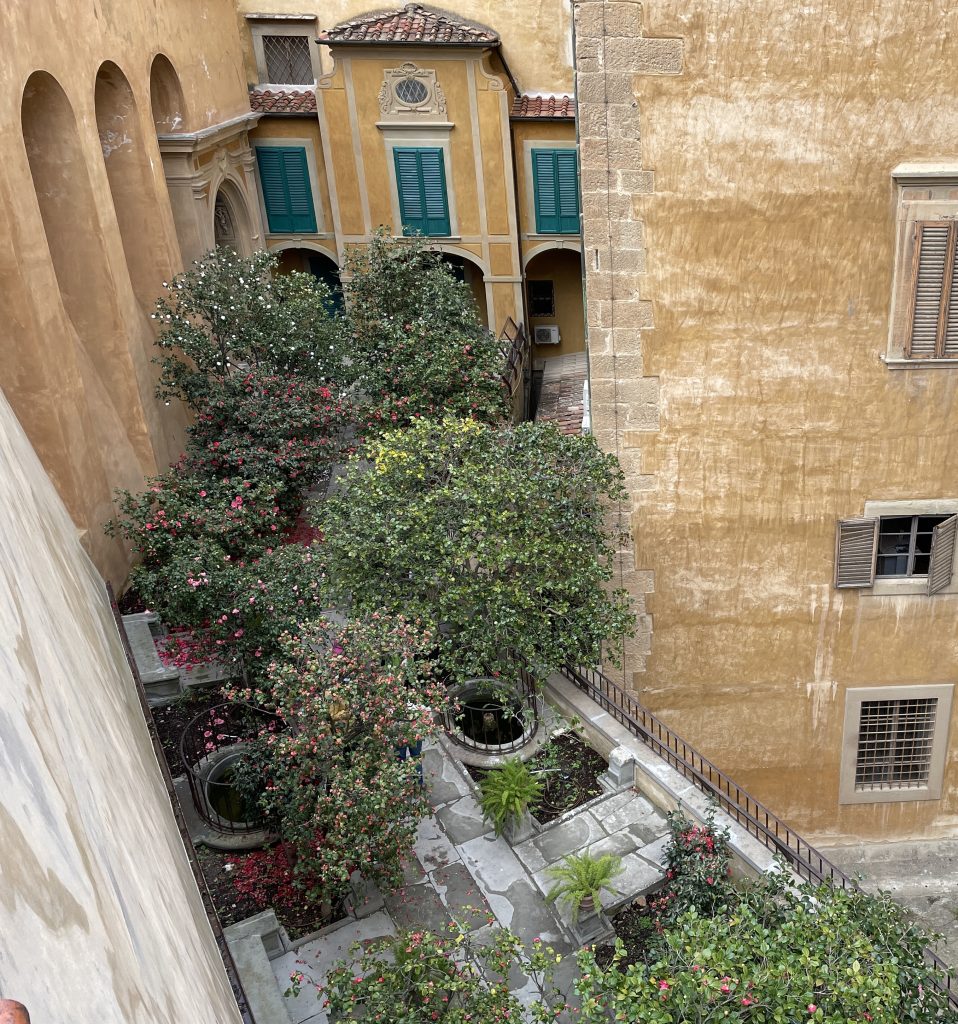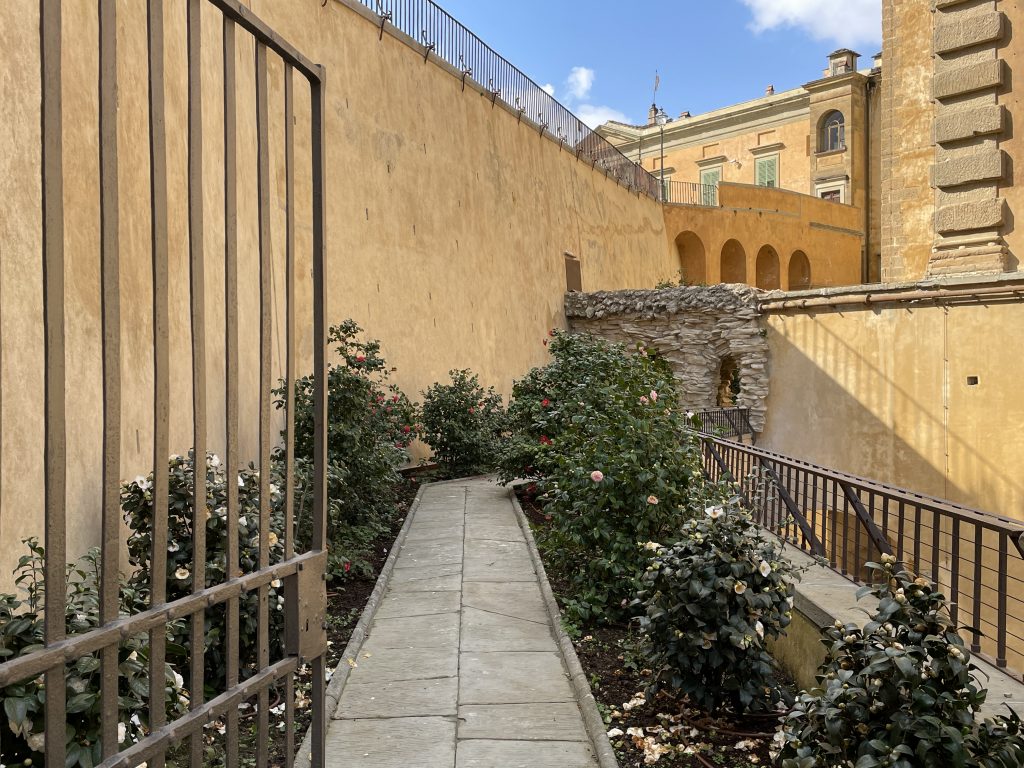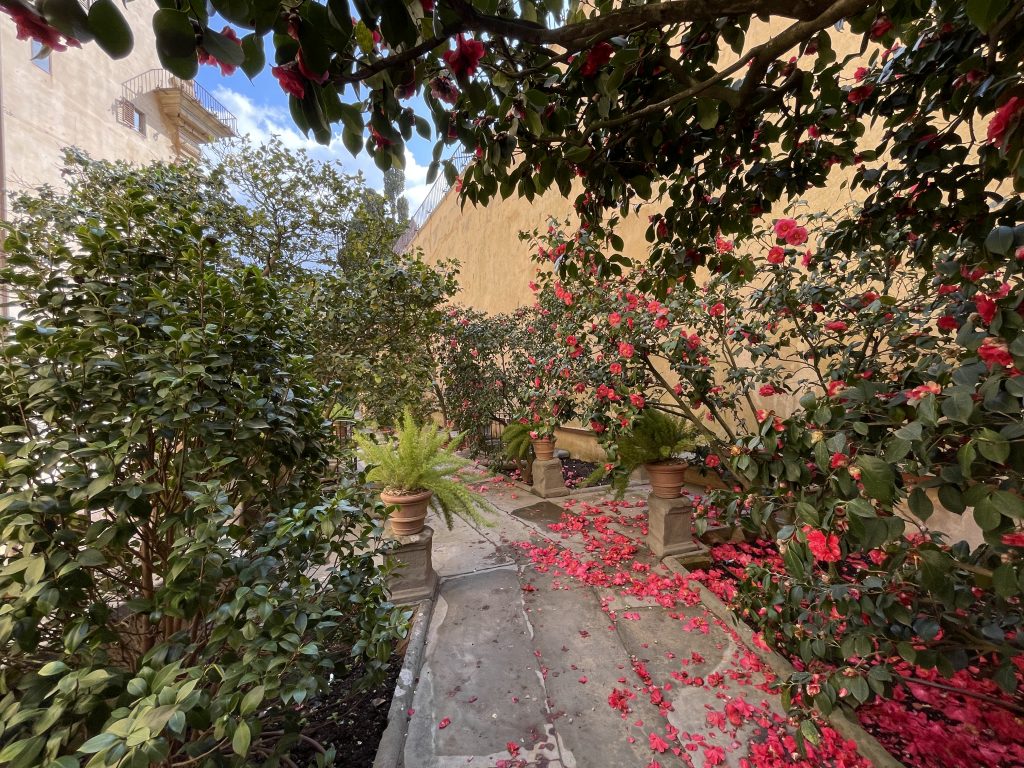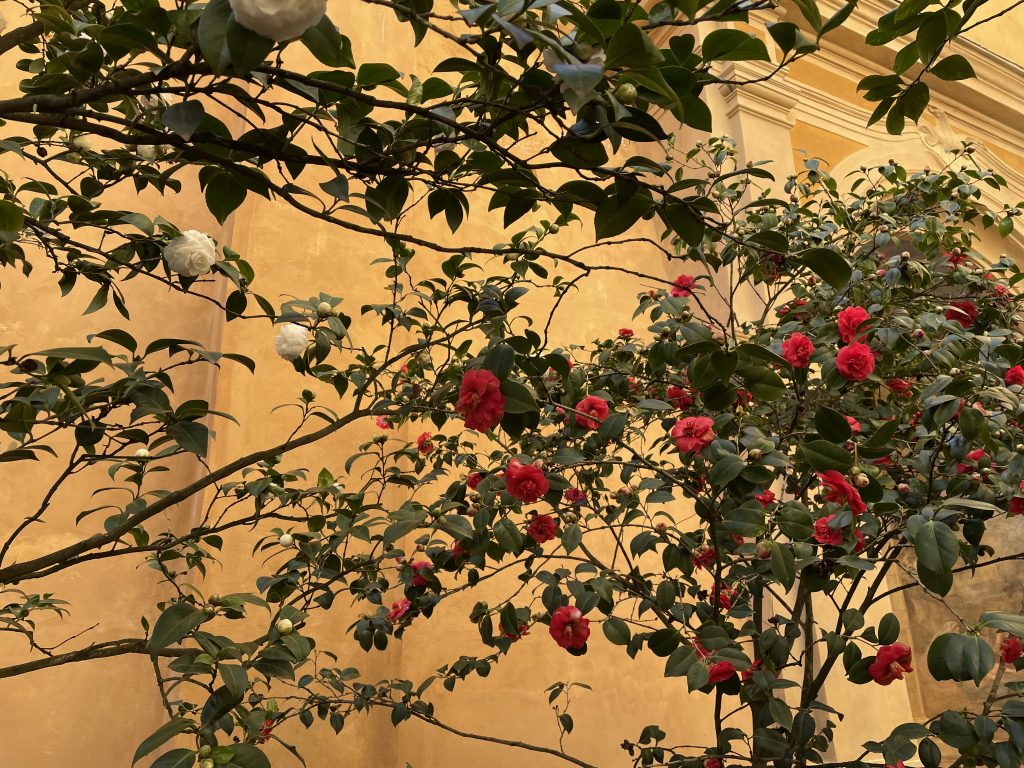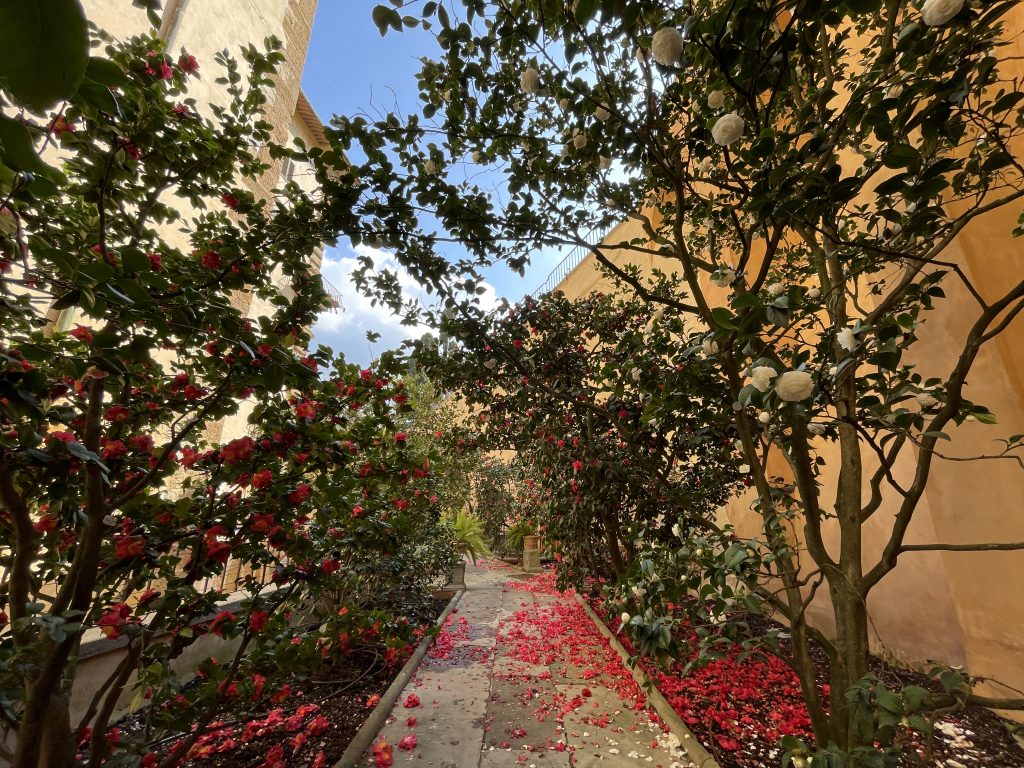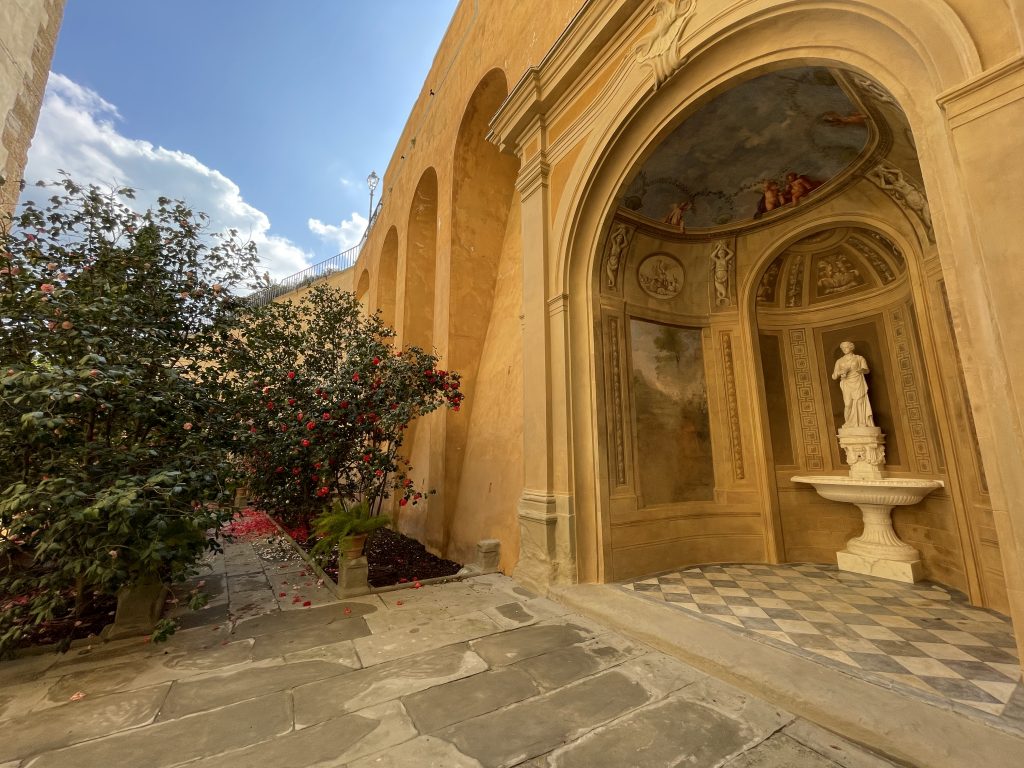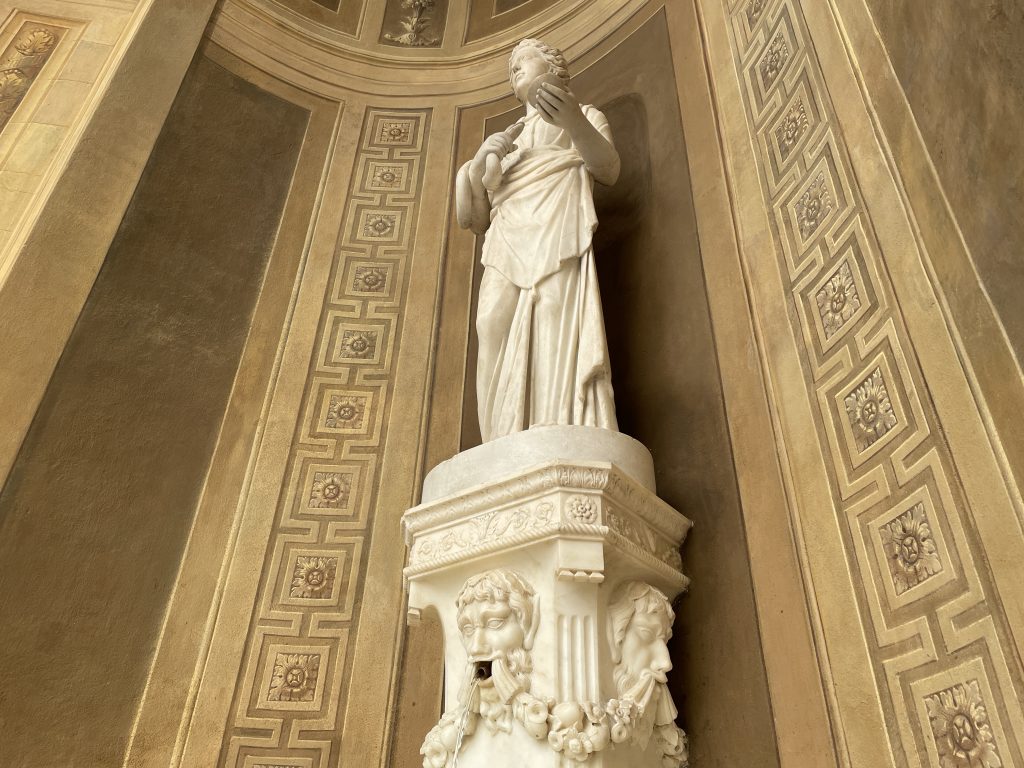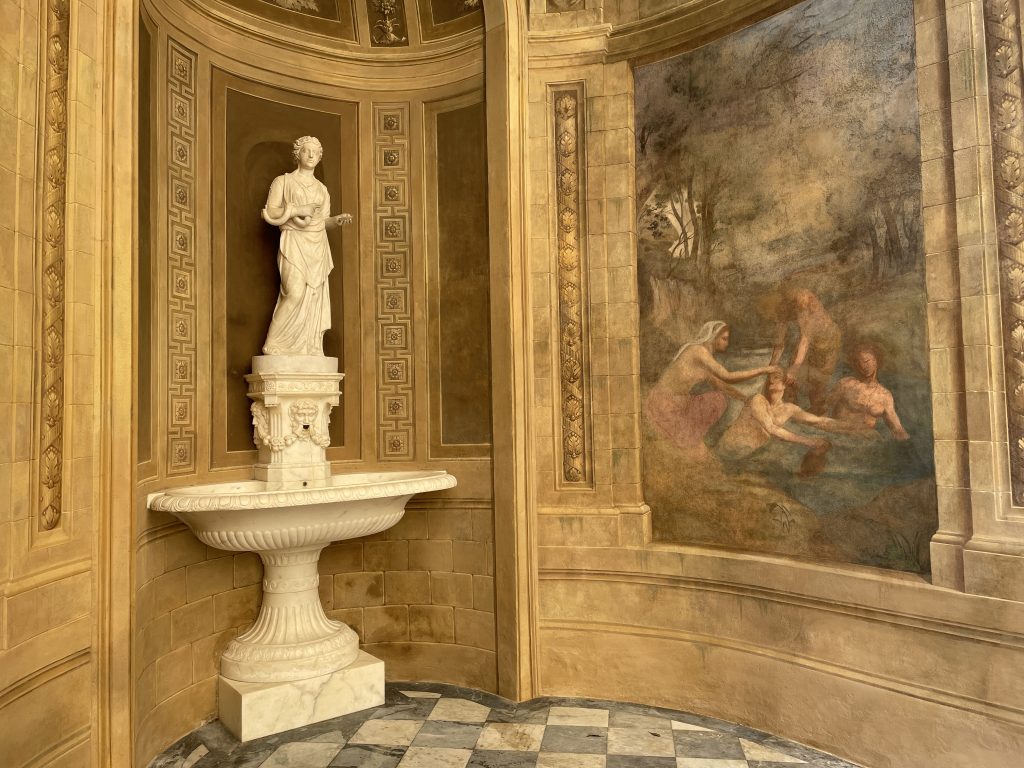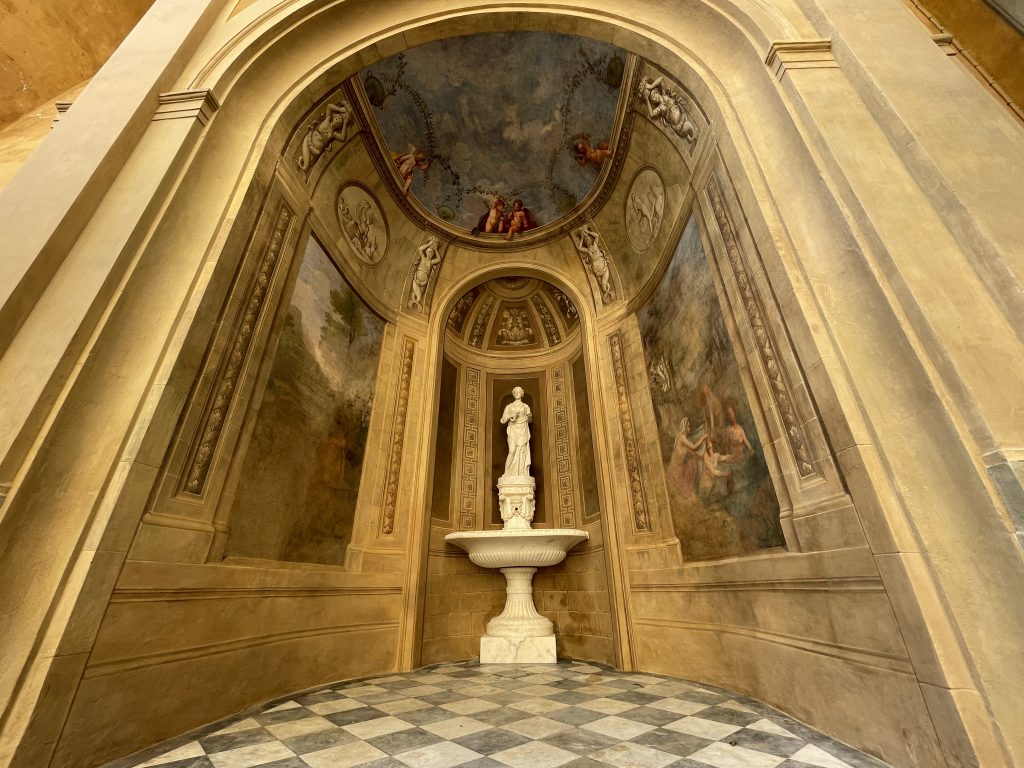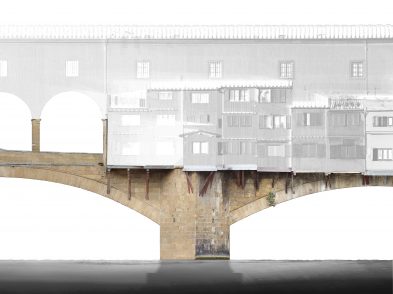The camellia garden, in the Boboli Gardens, has opened to the public for the first time after a long and complicated restoration campaign financed by the Uffizi Galleries and the Tuscan regional government.
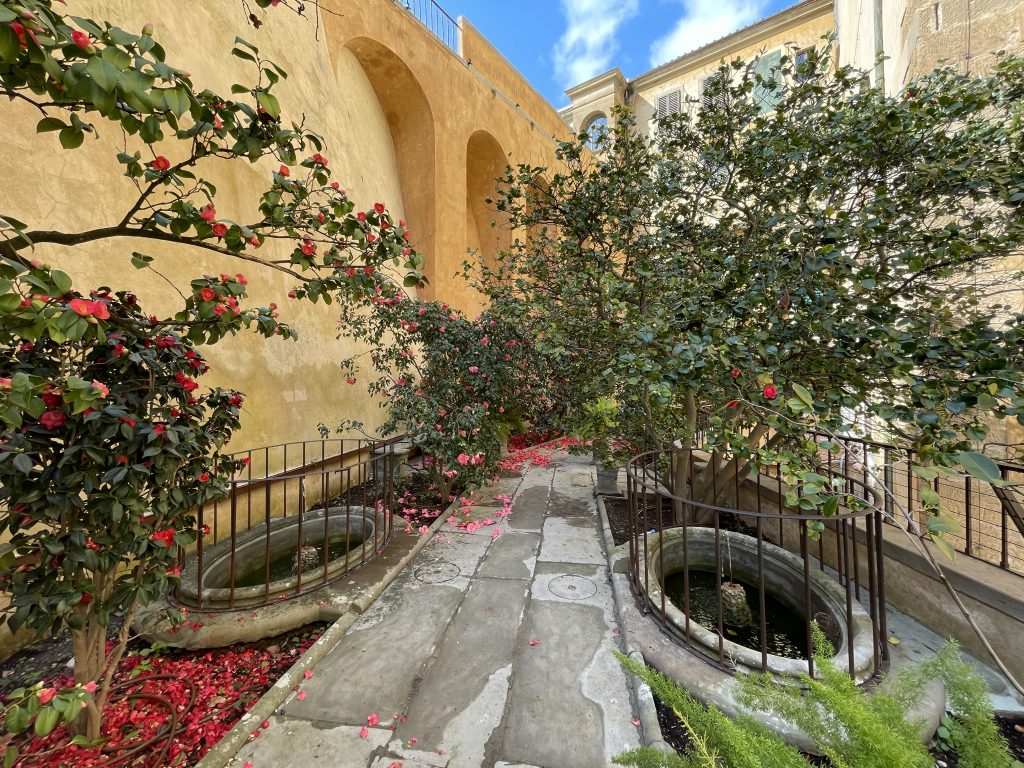
Situated between the ramparts that separate the Palazzo Pitti courtyard and the Medici parkland, this small garden was introduced in the mid seventeenth century for Mattias de’ Medici, the younger brother of Ferdinando II de’ Medici. Legend has it that the prince used the garden as his love nest, given its vicinity to his apartments and the arch-shaped grotto that concealed the space. In past centuries, this section of the grounds remained private for Medici family use and was dedicated to the cultivation of exotic plants and rare citrus varieties; the camellias came along in the nineteenth century.
The camellia arrived in Italy from the Far East around 1860 and Tuscany was one of the first regions to market the plant, given the high number of gardening enthusiasts. The garden is planted with various specimens of the Camellia japonica (“Candidissima”, “Anemoniflora”, “Pulcherrima” and “Rosa Simplex”) as well as other cultivars that have been reintroduced, such as “Alba Simplex”, “Lavinia Maggi”, “Oscar Borrini”, “Tricolor” and “Rosa Mundi”.
The seventeenth-century architecture stands out with water features that are enhanced by strategic new lighting that also emphasizes the frescoed ceiling. The restoration focused on the surrounding wall and grotto as well as the garden’s old stone paving. Giuseppe Gherardi’s tempera and fresco painting dating to around 1819 was uncovered near the statue of Hygieia. Putti can be seen playing among flowering branches on the ceiling, whereas mythological scenes, such as the torture of Pentheus and Orpheus and the Bacchae, are depicted in the lower sections.
Visitors can view the Camellia Garden on guided tours throughout April and May from Tuesday to Sunday at 11am, 12 noon, 1pm, 3pm, 4pm and 5pm. No booking required.

